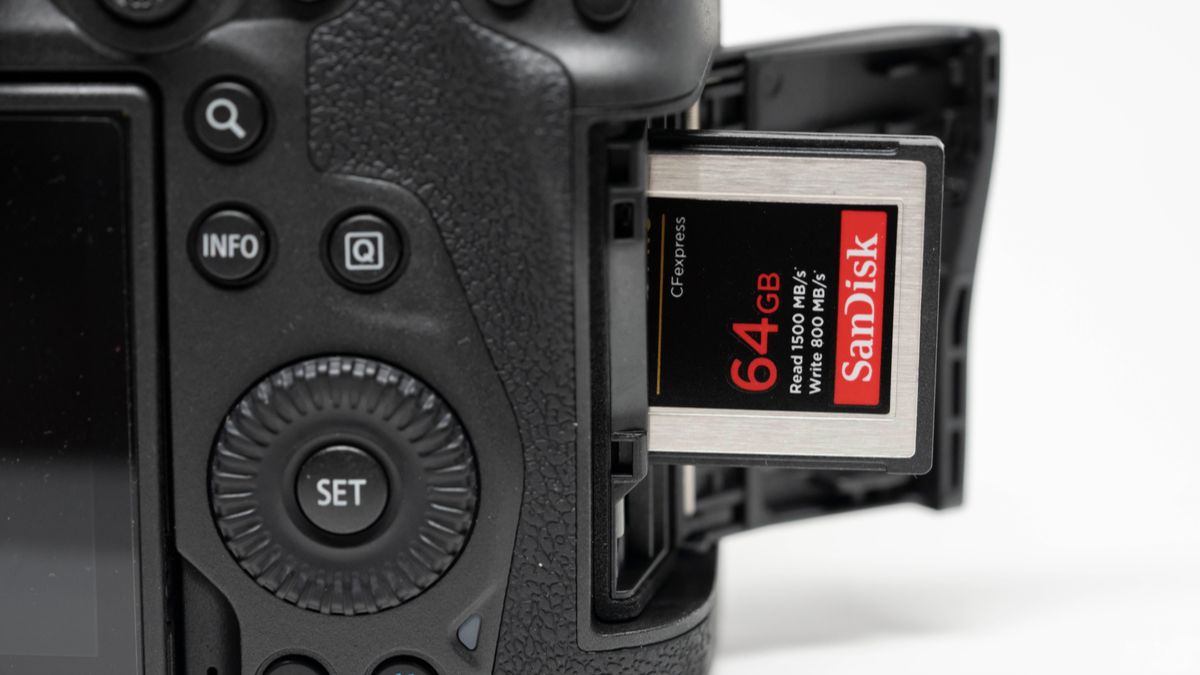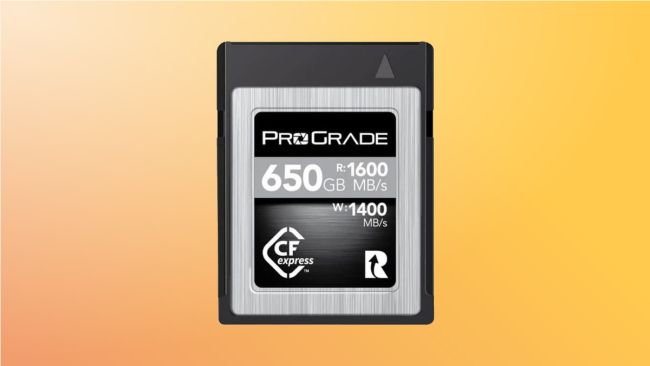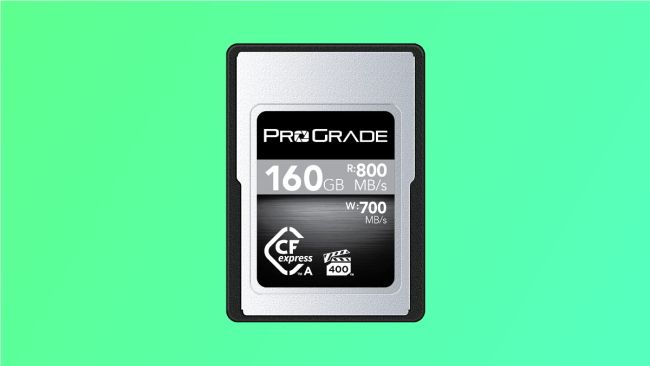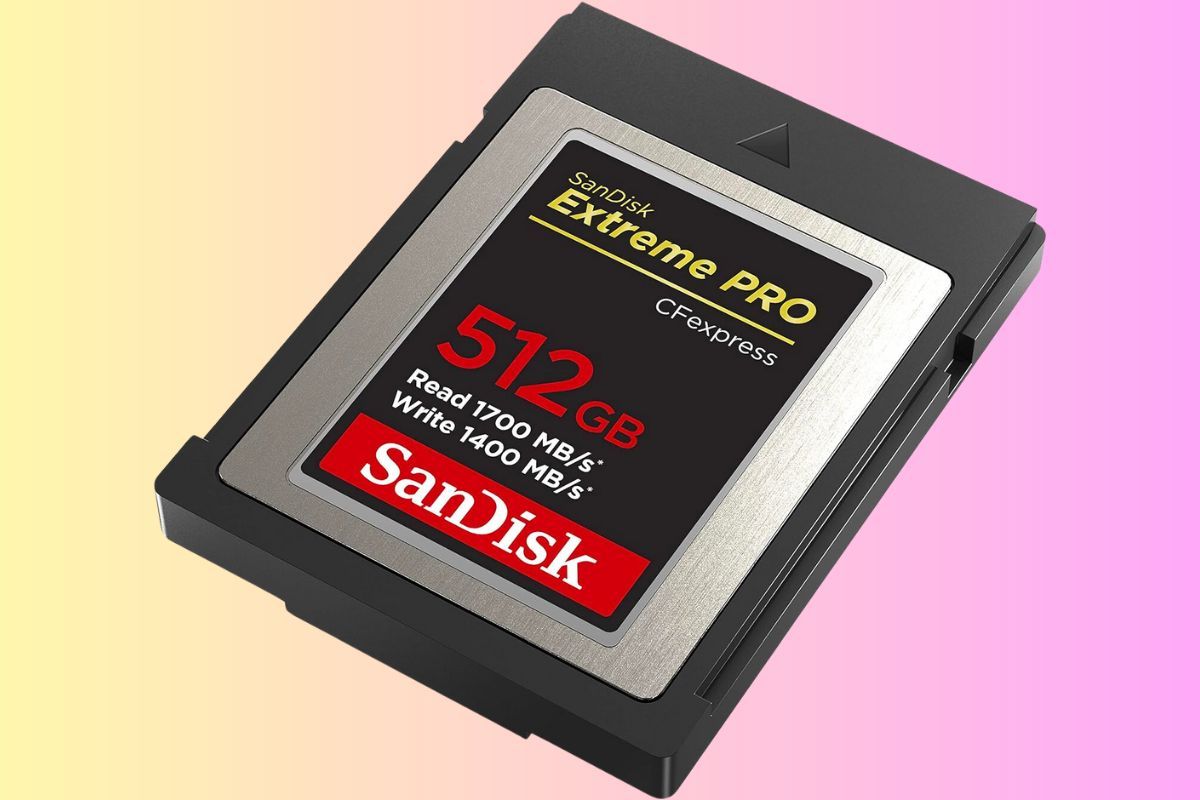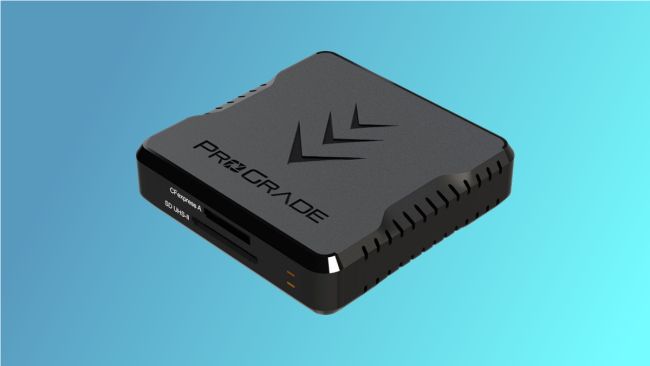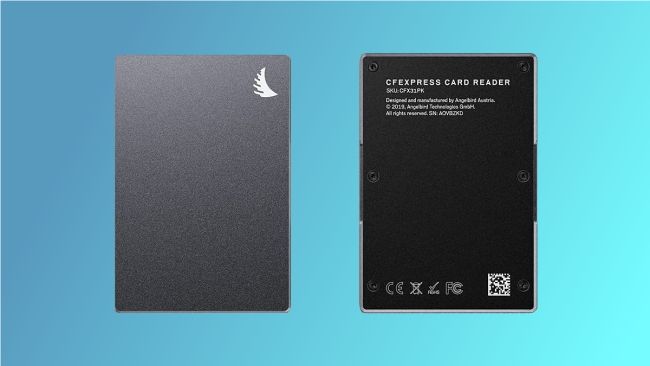Read update
- We've reviewed our recommendations and updated our pick for the best Type-B CFExpress card.
CFexpress cards promise faster read and write speeds than any other format. But they're not all created equal, and you want to make sure to get the right card for the job.
UPDATE: 01/12/2024
We've reviewed our recommendations and updated our pick for the best Type-B CFExpress card.
What to Know About CFexpress Cards in 2024
As new camera models with maxed-out specs like the Sony A1 and Canon R5 come on the market, shooters need a memory card that can keep up. Your standard SD card is going to have trouble processing 60-megapixel RAW photos at 20 frames per second, or 8K video.
CFexpress cards aim to solve that problem, boasting write speeds of over 1,000 MB/s. Shooting with one of these cards means several seconds---and hundreds of frames---of uninterrupted burst photo shooting. And even when your camera's buffer fills, it clears in a fraction of the lengthy wait times of the past.
When choosing a CFexpress memory card for photography, the most important factor will be the kind of shooting you do. If you shoot wildlife, you'll need a card that can keep up with sudden high-speed bursts of action. If you're a heavy video shooter, you'll need one that can keep up with the demand of video recording files over extended periods of time.
CFexpress cards come in three types: A, B, and C. Currently, only A and B are available to buy, and both are expensive. They're mostly used in mirrorless cameras, but a few top-tier pro DSLRs like the Canon 1DX MKIII use them, too. Future firmware updates will also make cameras using XQD cards compatible with the CFexpress format.
Whether you're using type A or B, higher-capacity CFexpress cards appear to perform better. Since these cards are already expensive, we'd recommend investing a little extra for something around 300-500 GB to start for better performance.
Another very important thing to note---the speed listed on the package won't be what you're getting all the time. That speed is the maximum read/write speed claimed by the manufacturer, and actual consistent read/write speeds will be different.
These cards can get hot from very heavy use, and that can also throttle the write speed down to somewhere around 300 MB/s. That said, average users and even most professional shooters won't tax these cards to the point that they heat up, and they cool down pretty quickly.
Since this format is still relatively new, there are some bugs yet to be worked out and some cameras might not support certain cards. Canon's R5, for example, will accept ProGrade Cobalt cards and Sony Tough cards but not ProGrade's Gold line. When choosing a CFexpress card, be sure it'll work with your camera.
Now that we've covered some of the basics, we'll look at some of the best CFexpress cards on the market right now.
|
How Did We Research |
||
|
Models Evaluated |
Hours Researched |
Reviews Analyzed |
|
12 |
5 |
26 |
How-To Geek's product recommendations come from the same team of experts that have helped people fix their gadgets over one billion times. We only recommend the best products based on our research and expertise. We never accept payment to endorse or review a product. Read More »
Best CFExpress Card Overall: Prograde Digital Cobalt
|
Pros |
Cons |
|---|---|
|
✓ Rugged and durable design |
✗ High price point |
|
✓ High read/write speeds during real-world use |
✗ Lower capacity type B cards might not be as fast |
ProGrade Digital's Cobalt line is designed very sturdy and performs with the best of them. If you're the kind of person who worries about snapping memory cards in the field, these are built with a metal enclosure for extra durability as well. It would take a lot to break this card!
In an exhaustive real-world performance test by photography website PetaPixel, the Cobalt cards tied for first in a number of benchmark tests, making them a solid all-around choice. ProGrade makes both type A and type B cards, with the type B cards we recommend available in up to 660 GB capacity.
If you're looking for something dependable or you're just getting into the CFexpress format, this is a solid card to try.
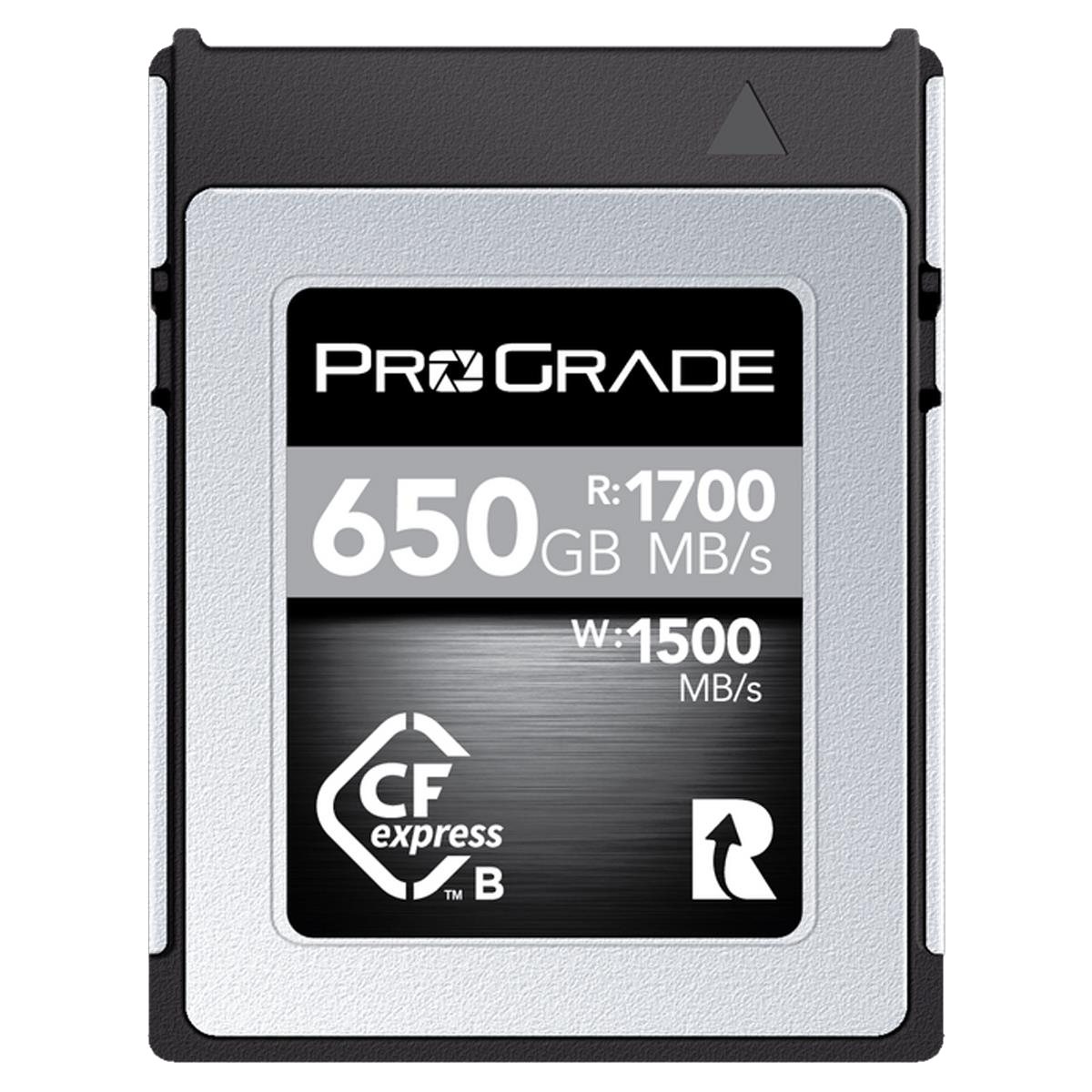

Prograde Digital Cobalt CFexpress Card
ProGrade's Cobalt line is a fast, high-performing line of CFexpress cards that come in type A and B formats.
Best Type A CFexpress Card: ProGrade Digital 160GB
|
Pros |
Cons |
|---|---|
|
✓ Same rugged design as the Cobalt line |
✗ Can't get as much storage capacity as type B cards |
|
✓ Slightly faster read/write than Sony under thermal throttling |
ProGrade Digital's 160GB CFexpress type A Card comes in just a hair ahead of Sony's Tough line of type A CFexpress cards to win this spot. When tested against the Sony cards, the ProGrade model had higher read and write speeds after they heated up from use and the built-in thermal throttling took effect.
Type A cards are slower than type B, but they're also less expensive. So if you're looking for a budget CFexpress card---as much as one can be budget that is---type A might make sense if you're using a camera that takes them.
We recommend the ProGrade due to its slightly better performance, but Sony pioneered the type A card, and many of their higher-end cameras like the Sony A1 use them. The Tough CFexpress cards are slightly more expensive than ProGrade, but their cards hold up very well if you're a Sony person and want to stick with that brand.
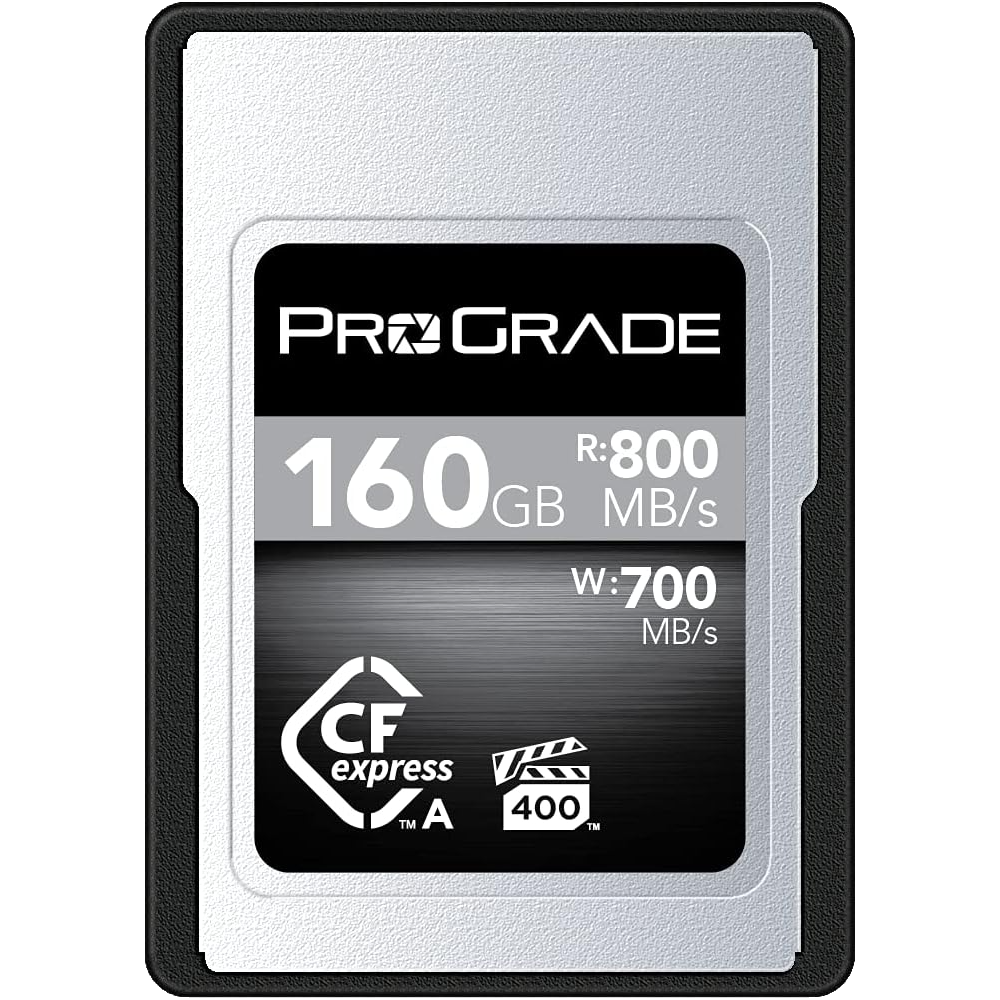

ProGrade Digital CFexpress 2.0 Type A Memory Card (160GB)
This ProGrade card is a fast Type A CFexpress card that performs well even under strain.
Best Type B CFExpress Card:SanDisk 512GB Extreme PRO CFexpress Card Type B
|
Pros |
Cons |
|---|---|
|
✓ Not the fastest card, but still really fast |
✗ If you need ultimate speed you may need to look elsewhere |
|
✓ Decent pricing at every capacity |
|
|
✓ Professional grade reliability |
Type B CFExpress cards are designed for bandwidth-hungry, sustained video capture at high resolutions. Then, when the shooting is done, they also excel at dumping that footage into your editing computer at lightning speed. The SanDisk 512GB Extreme PRO CFexpress Card Type B card offers a read speed (on the 512GB model) of 1700MB/s and a write speed of 1400 MB/s, with other capacities varying somewhat in performance depending on their internal configuration.
The SanDisk doesn't offer the absolute fastest read and write speeds you can presently get in a Type B CFExpress card, but it's close with no more than 100 MB/s claimed speed difference in most cases. That said, the real speed limit is your camera itself, and most current cameras come nowhere near the limits of Type B cards, unless you're using cinematic-grade equipment.
The in-camera write speeds typically peak at around 500 MB/s, so the main benefit happens when you connect a fast Type B card reader to a computer with a fast port (e.g. USB 3.2) and copy the data to a fast destination drive like an NVME SSD.
SanDisk is generally considered a reliable brand in the flash memory market, and user reviews of this card reflect that. So given its all-round prowess, this is the Type B CFExpress card we'd be slotting into our camera.
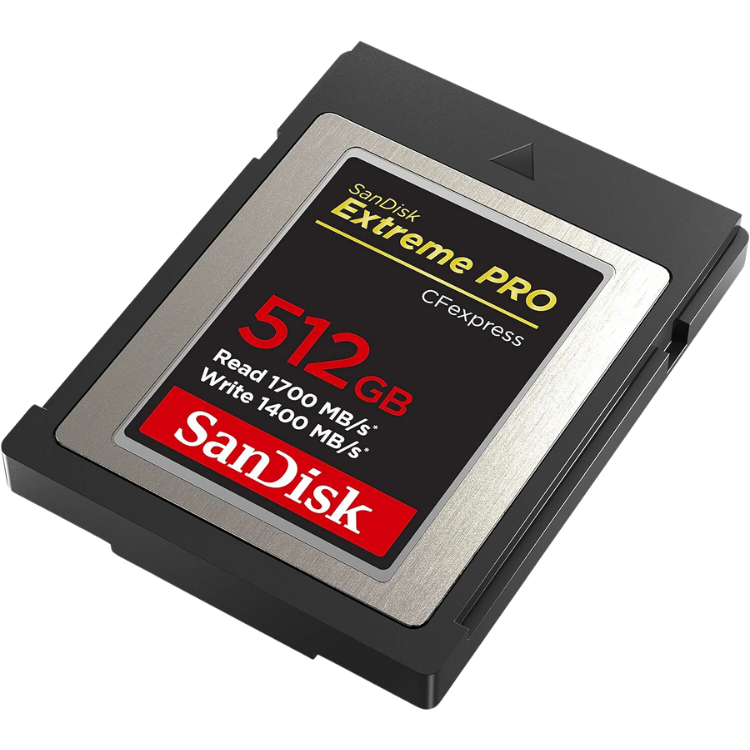

SanDisk 512GB Extreme Pro CFexpress Card Type B
The Extreme PRO CFexpress Card Type B card is perfect for those who need to film RAW 4K footage and then dump it at high speed once the shooting is done.
Best CFExpress Type A Card Reader: ProGrade Digital
|
Pros |
Cons |
|---|---|
|
✓ High-speed transfer rate |
✗ Doesn't read CFexpress type B cards |
|
✓ Offers a lot of value for the price point |
|
|
✓ Can be stacked with other ProGrade readers |
|
|
✓ Also reads UHS-II SD cards |
At under a hundred dollars, ProGrade's CFexpress Type A Reader comes from a trusted manufacturer and won't break the bank. There's also a card slot for UHS-II SD cards, a handy addition for those transitioning from SD to CFexpress, or for a camera that takes both cards.
ProGrade's reader can clock transfer speeds of up to 1.25 GB/s, so it won't take all day to transfer those large RAW files from your card to the computer you're editing on. It's also USB-powered, so this reader doesn't need an external power source. It's convenient and cost-effective.
ProGrade also makes several other readers similar to this one designed to be stacked with one another, good for people using several different memory card formats that want to stick with this brand.
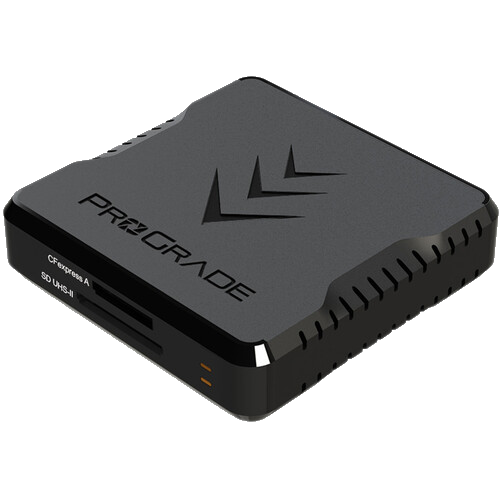

ProGrade Digital CFexpress Type A Card Reader
ProGrade offers a lower-cost CFexpress type A card reader that still delivers on speed.
Best CFExpress Type B Card Reader: Angelbird CFexpress Card Reader
|
Pros |
Cons |
|---|---|
|
✓ Metal body guards against shocks and drops |
✗ Doesn't read CFexpress type A cards |
|
✓ Write protect switch helps protect data |
|
|
✓ Fast file transfer speeds |
Angelbird's CFexpress Card Reader separates itself from the pack not only with performance but stellar customer service. Reviewers praise the build quality and transfer speed of this reader, many of whom point out that it competes with pricier models.
Angelbird's reader has unrestricted data transfer speeds and impressive build quality---the metal construction makes it resistant to shocks and drops, and the form factor is impressively compact. If you're a photographer that travels a lot, this could be the reader for you.
Another nice factor of this reader is a built-in "write protect" function. Flipping a switch on the body of the device prevents unwanted files from being written to the card or unintentional deletion. That's an especially useful feature if you're, say, a wedding photographer with gigabytes of crucially important shots to back up.
There are certainly faster readers out there, but for the money, this is one of the best CFexpress type B card readers currently on the market. It costs around $80 at the time of this writing, and competing readers can go for as much as $200.
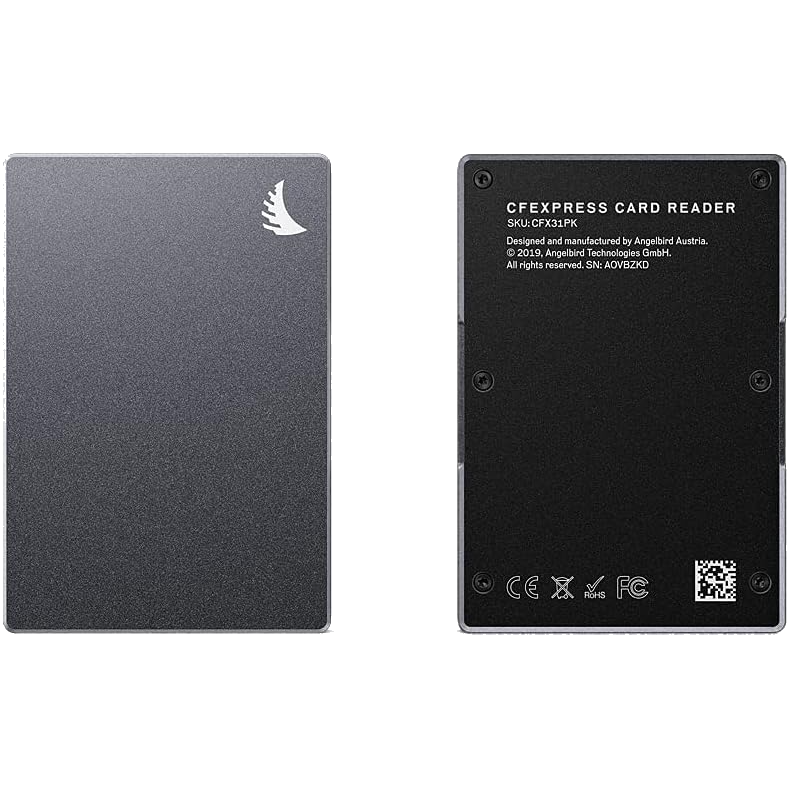

Angelbird CFexpress Card Reader
Angelbird offers a fast and durable CFexpress card reader, and this is a company that backs up their products.
FAQ
Can all cameras use CFexpress cards?
No; the majority of cameras use SD or microSD cards for storage. However, with CFexpress rising in popularity, many newer, high-end mirrorless and DSLR cameras are capable of utilizing the improved storage format. These include Sony's A7 III and Alpha 1, Nikon's Z6 and Z7 series, Canon's EOS R5, Panasonic's Lumix S1, and some similar options.
What's the difference between CFexpress types A and B?
Aside from differing in size (type A CFexpress cards are physically smaller than type B), the main difference between the two types is the number of PCIe lanes available in each. Type A CFexpress cards offer one lane whereas type B offers two. This translates to different data transfer speeds; type A caps out at 1000MB/s, and type B has a maximum speed of 2,000MB/s (though it's unlikely you'll reach these top speeds in practice).
Can a CFexpress reader read XQD cards?
Type B CFexpress cards use the same physical format as XQD cards. This means you should be able to use the two interchangeably as long as your camera's firmware supports both types.
Are CFexpress cards and XQD cards the same thing?
Not quite. They're similar, but CFexpress cards allow higher read/write speeds than XQD cards. While XQD cards top out at under 500MB/s, you can easily find CFexpress cards that reach 1750MB/s (and even higher).
What's the difference between a CFexpress card and an SD card?
SD cards offer significantly slower read/write speeds than CFexpress cards. A quick Amazon search will reveal that most SD cards fall under 200/MBs, whereas their CFexpress siblings achieve speeds above 1500MB/s. If you're shooting home photos and videos, you likely only need an SD card. However, if you're shooting 8K video, you'll want a storage system that can keep up with that amount of data (CFexpress cards). CFexpress type A cards are also different from SD cards in the physical sense---the former are noticeably smaller (20 x 28mm) than the latter (32 x 44mm).

